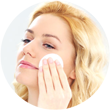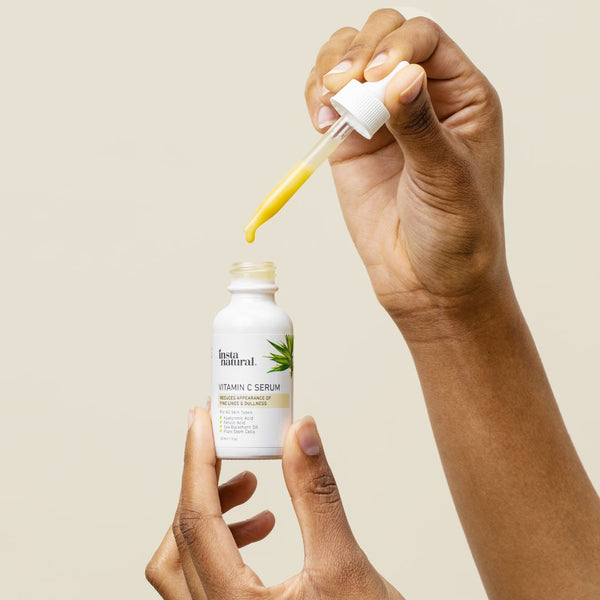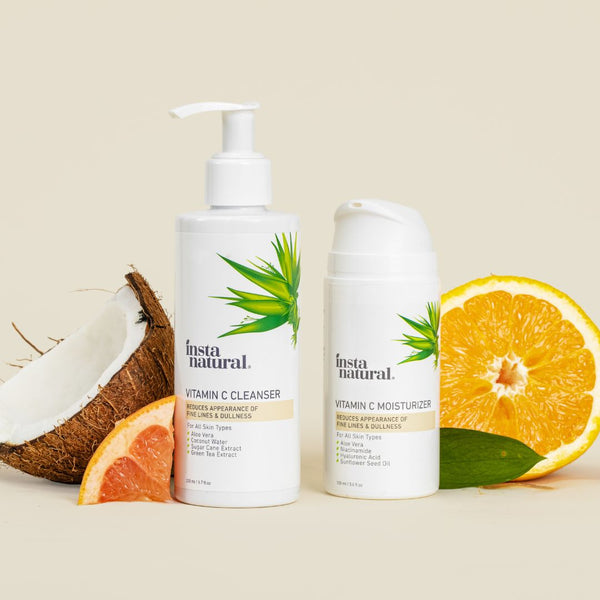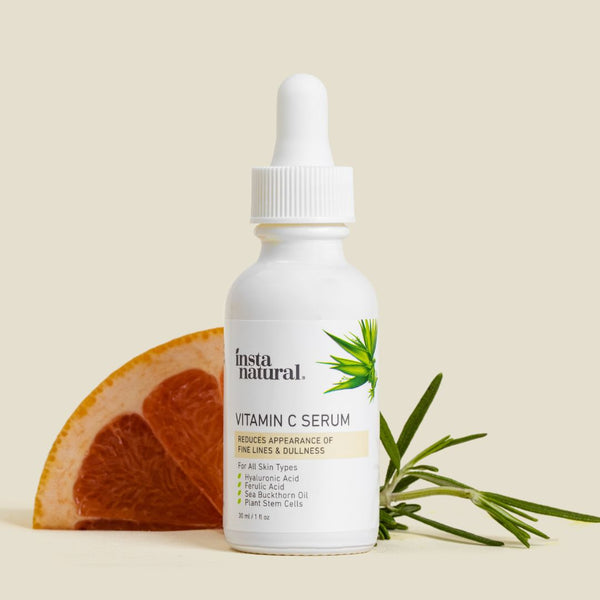
Salicylic acid may sound like a substance you'd want to avoid, but it’s a surprisingly common part of many skin care products. Learn how salicylic acid is used, plus decide whether using salicylic acid will benefit you.
What to Know About Salicylic Acid
Salicylic acid has relatively natural origins, as it was once derived from the metabolism of salacin, often found in the bark of willow trees. Like salacin, salicylic acid is an anti-inflammatory substance with chemical similarities to aspirin. Although the natural compounds in willow bark have provided people relief from pain and fever for centuries, modern-day salicylic acid is biosynthesized, or created artificially.While this ingredient continues to offer pain relief with its anti-inflammatory properties, today you'll most often find salicylic acid in skin care applications. As a colorless beta hydroxy acid (BHA), salicyclic acid exfoliates and removes dead cells from inside pores and on the surface of the skin. As it removes old skin, salicylic acid also encourages new cell growth, ultimately offering relief from several skin issues. Take InstaNatural's Age Defying & Skin Clearing Serum for example, it uses Salicylic Acid to soothe and clear blemishes. This fresh, radiant skin will be a welcome sight whether you're using an anti-aging formula, anti-acne cream, or another salicylic acid-based solution.
Ways to Use Salicylic Acid

Since salicylic acid is present in so many products, no singular way exists for using this ingredient. Instead, salicylic acid can be effective in the following ways:
- Gels or Creams: Apply a small amount of these solutions directly to affected areas on the skin and rub them in until they’re no longer visible. Don’t rinse or remove after application.
- Cleansers or Shampoos: Wet your skin or hair, then massage the product into your skin for a few minutes. Rinse hair or skin thoroughly after use and repeat if necessary.
- Medicated Pads: Apply by swiping the pad across the affected area. Most products don’t require you to wash the product off after use.
- Concentrated Solutions: Wash and dry the affected area, then apply highly concentrated products directly to the skin. These products often require you to use a bandage or another protective barrier to keep the solution in place.
Products That Rely on Salicylic Acid
-
Anti-Acne Creams: Since this substance can exfoliate cells on yourskin’s surface as well as inside pores, salicylic acid anti-acne creams can unclog unhealthy pores, clear away dead skin cells on thesurface, and help your skin regenerate and repair itself. Salicylic acid features prominently in several products, like InstaNatural's Age Defying & Skin Clearing Moisturizer. Some of the most popular product types include the following:

- Anti-Aging Lotions: As BHAs, salicylic acid products work well as anti-aging solutions. Not only do they remove old skin cells, but they also encourage new skin cells to develop. This regenerated layer gives your skin a smoother look overall.
- Anti-Dandruff Shampoos: Salicylic acid effectively breaks down proteins that hold your skin together, so a topical application can do wonders for alleviating persistent cases of dandruff or psoriasis. Since people with psoriasis deal with large, thick areas of skin buildup on the head and other isolated areas, a salicylic acid solution can help break up these areas and exfoliate the dead skin. Anti-dandruff shampoos like these can also reduce inflammation and help prevent recurring skin issues.
- Wart Removers: With their exfoliation abilities, highly concentrated salicylic acid solutions can effectively remove warts, calluses, and corns. In their place, these solutions encourage fresh, new skin to grow. Since these applications require products with higher concentrations, pay close attention to any adverse effects or irritations. More developed skin conditions may need multiple rounds of product application.
How Much Salicylic Acid Is Safe
The amount of salicylic acid that’s safe for an individual user depends strongly on your age and any skin conditions you have. Below are some of the most common salicylic acid applications and quantities:
- Anti-Acne Treatments: Most over-the-counter acne treatments are capped at 2 percent salicylic acid for creams and gels meant to remain on the skin. If you have particularly sensitive skin, look for less intense products, which may include as little as half a percent of salicylic acid. These treatments are typically safe for use once or twice per day, as long as you use them as directed.
- Anti-Aging Lotions: Like acne treatments, anti-aging lotions generally have about 2 percent salicylic acid as an active ingredient. When left on the skin, this salicylic acid concentration is ideal for regenerating fresh skin cells.
- Anti-Dandruff Shampoos: Hair care products like shampoo typically have between 3 and 12 percent salicylic acid, or up to six times as much as basic skin care products. Since the percentage of active ingredients is higher for shampoos, be sure to rinse them off after use to protect the delicate skin on your head.
- Wart Removers: In general, wart removal treatments have anywhere from 17 to 27 percent salicylic acid. Since this application is markedly different from that of anti-aging lotions and anti-acne treatments, be sure not to use wart removal solutions interchangeably with other formulas. Use these solutions once or twice a day as directed and don’t continue use beyond the recommended time frame.
Although salicylic acid products are safe for most skin types, your reaction to over-the-counter salicylic acid products can differ greatly from your reaction to prescription medications. Take care to introduce salicylic acid products to your personal care regimen slowly and monitor your skin closely for side effects and reactions.
Possible Side Effects From Salicylic Acid
You can have too much of a good thing. Those who overdo salicylic acid applications or use too much product over a prolonged period may experience some side effects. More often than not, these issues center on skin problems. The following are some of the most common side effects from salicylic acid use:
- Sunburns: Salicylic acid overuse can cause chemical burns, and regular use can also leave skin overly exposed in the sun. Sunburn is a common side effect for people who use any BHA-containing product, so be sure to use sunscreen along with any salicylic acid product.
- Extreme Dryness or Oily Feeling: Salicylic acid treatments can have a drying effect, since they encourage exfoliation, peeling, and cell turnover. Sometimes, however, these products have the opposite effect, as skin overreacts to dryness by producing more oil than usual. Since both of these issues can lead to acne and other skin issues, decrease your salicylic acid use to reduce skin irritation.
What Precautions Should You Take Before Using Salicylic Acid?
Salicylic acid isn't a substance to take lightly. As a BHA that works on the surface of the skin, this substance can easily break down basic components like fats. Take care to limit your application of this substance to prevent chemical burns, which can occur with overuse.
Whenever you begin using a new topical medication or cosmetic product, test your reaction first. You can do this test by applying a small amount of the medication to a less visible part of your skin. Check for a noticeable reaction a few minutes, a few hours, and a day after application to confirm whether you’re sensitive to the topical product in question. If you are sensitive, try the same testing process with another product instead.
If you suffer from several external and internal health issues, you should consult with a doctor before using salicylic acid. If you have diabetes, for instance, using salicylic acid may cause extreme redness in your skin. If you have kidney disease or liver disease, taking salicylic acid can worsen some of your symptoms.
Also, before you start using salicylic acid, make sure you understand its proper application. If you plan to use a topical treatment, for instance, be certain not to ingest the solution or allow it to touch sensitive organs like eyes or noses. Understand whether the product can be washed away immediately or if you should leave it on your skin for hours or even days.
After doing your research and taking precaution to see if Salicylic Acid is right for you, check out InstaNatural's Skin Clearing Collection. The collection is designed to soothe and smooth breakout prone skin with ingredients like Salicylic Acid to reduce the appearance of blemishes for an improved complexion.
Can You Combine Salicylic Acid With Other Ingredients?
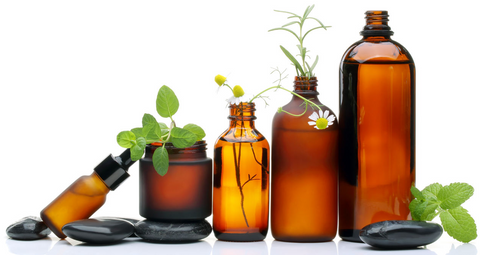 Taking or using salicylic acid when eating or drinking alcohol can also produce surprising side effects. Contact a professional to learn more about the best time to use salicylic acid during your daily routine. Combining various medicines can have unintended side effects. Be sure to check with your doctor before introducing a new oral or topical medicine into your health care routine. The Mayo Clinic warns against taking both salicylic acid and Ketorolac at the same time, and combining salicylic acid with glycolic acid can lead to serious skin dehydration. A long list of other medicines may produce dangerous or unhealthy reactions, so always be sure to consult with a medical professional for specifics.
Taking or using salicylic acid when eating or drinking alcohol can also produce surprising side effects. Contact a professional to learn more about the best time to use salicylic acid during your daily routine. Combining various medicines can have unintended side effects. Be sure to check with your doctor before introducing a new oral or topical medicine into your health care routine. The Mayo Clinic warns against taking both salicylic acid and Ketorolac at the same time, and combining salicylic acid with glycolic acid can lead to serious skin dehydration. A long list of other medicines may produce dangerous or unhealthy reactions, so always be sure to consult with a medical professional for specifics.
Should You Use Salicylic Acid When Pregnant?
When you’re pregnant, it’s important to approach close to every type of medicine with extra caution, including salicylic acid. After all, everything you consume or apply to your skin can affect your unborn baby’s development. If you were in the habit of applying salicylic acid ointment to your skin or washing your face with a salicylic acid cleanser each day in the past, reconsider the types and amounts of solutions you use when pregnant.
BabyCenter strongly advises against pregnant women using topical applications of salicylic acid-based solutions. Although no studies have revealed direct links between topical applications and pregnancy complications, the results of oral use are enough to encourage pregnant women to approach topical use with extreme caution. If you opt to have a salicylic acid peel while pregnant, consult with your doctor first, since this application requires BHAs to remain on your skin for an extensive amount of time.
Is Salicylic Acid Safe for People of All Ages?

Products containing salicylic acid and BHAs are generally safe for adults when used as directed, but they’re not always safe for children. Reye’s syndrome can affect children when they take aspirin-like ingredients during or shortly after recovery from the flu, colds, or fevers. Since the possible connections are still under investigation, the U.S. Food and Drug Administration (FDA), the Centers for Disease Control and Prevention (CDC), and the American Academy of Pediatrics all recommend that children under age 19 not take salicylic acid or other aspirin-like ingredients.
Children can also have unexpected reactions to topical applications of salicylic acid, since young skin can absorb the substance faster and experience greater irritation. The Mayo Clinic recommends applying salicylic acid only to small, isolated areas on the skin and limiting the amount of time children are exposed to the substance. The Mayo Clinic also recommends not using the substance at all on children under age 2.
Salicylic Acid Alternatives
Whether you have sensitive skin or you’re interested in a less harsh solution for skin issues, plenty of milder alternatives to salicylic acid exist. You can try one of the following products:
- Alpha Hydroxy Acid (AHA): Like BHAs, AHAs work to exfoliate skin and remove dead skin cells. AHAs like glycolic acid are also effective against acne, and these substances can contribute to a smoother, more even appearance in your skin tone.
- Benzoyl Peroxide: This medicine is often effective as an acne treatment, but instead of exfoliating like salicylic acid, benzoyl peroxide works to kill bacteria causing the inflammation and dry the affected skin.
- Scrubs: When you really want to exfoliate your skin, a skin-brightening scrub can be your best friend. Look for scrubs with ingredients such as Vitamin C or citric acid, an AHA that can help your skin look bright, smooth, and even.
- Witch Hazel: One of the most natural alternatives to salicylic acid, witch hazel works as an astringent. With witch hazel, you can both tighten your skin and decrease inflammation.
Salicylic acid may have natural origins, but those natural origins do not mean this exfoliating and anti-inflammatory substance is right for everyone. Whether you’ve been using a salicylic acid product for years or you are considering introducing one of these products to your health care regimen, be sure to understand its uses, applications, and potential side effects before beginning any applications. Armed with the knowledge in this guide, you can make sure that you're both looking and feeling your best.
Shop Our Skin Clearing Collection
Age Defying & Skin Clearing Toner Age Defying & Skin Clearing Serum
